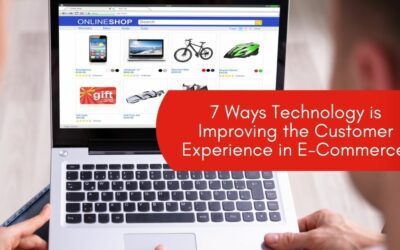Have you ever landed on an e-commerce website only to find broken links, hard-to-navigate menus, and long load times? If you have, it is fair to assume that you didn’t stick around for long and quickly went back to the SERPs to find a different store.
At first glance, investing in your website’s user experience (UX) may seem like a luxury item. After all, if people really like your product, they can manage a few obstacles on the way, right? Sure, they can, but in this day and age, they really don’t have to.
WHY USER EXPERIENCE MATTERS
Let’s face it, no matter how niche your niche is and how specific your product, there are always other options. The same thing that makes it easy for your customers to reach you makes it easy for them to shop around, which means they are unlikely to suffer through a terrible user experience just to be able to buy from you rather than someone else.
UX is just as crucial to increasing your revenue as things like SEO, product quality, and fair pricing. Fortunately, many small businesses often leave this aspect to chance, which gives you a chance to stand out from the crowd.
5 UX BEST PRACTICES FOR YOUR E-COMMERCE WEBSITE
We collaborated with a web design company from NY and came up with five e-commerce UX best practices that you can use to turn more of your site’s visitors into customers. Check them out below!
1) Keep your homepage clean
Users need only about half a second to form an impression about your website. You might have seen this stat before, but it’s worth repeating as it so clearly illustrates the necessity for a no-nonsense homepage.
Obviously, in most cases, the first thing your users see when they run into your site is your homepage. It is the page that sees the most traffic and is meant to tell people what your store is about as quickly and effortlessly as possible. Therefore, it must be clutter-free, clean, and focused.
All of this sounds simple enough, but drawing people in with just a few words and an image or two takes some skill. Here are a couple of quick tips to get you started:
- Keep your design simple and minimalistic
- Use a consistent color scheme
- Utilize negative space and contrasting colors to pull focus to essential elements like CTAs
When it comes to homepages, it is often a case of “less is more,” so we recommend keeping this mantra top of mind when designing yours.
2) Make navigation effortless
Imagine wandering through a town, trying to find a specific location without the help of a map, road signs, or anyone to ask. Now imagine that experience translated into website form, and you’ve got yourself a recipe for poor conversion rates.
When users visit your website, they want to know exactly where they should go to get what they want. Simultaneously, they don’t want you to burden them with information or streamline the process to such an extent that they don’t feel like they are left any freedom to explore.
Again, making an easy-to-navigate website doesn’t sound all that difficult until you try to do it. You’ll quickly find out that finding the right balance between freedom and hand-holding is tricky, but there are a few things you do to make it easier:
- Use color contrast, white space, and arrows to draw attention to call-to-action buttons
- Separate your products into categories, using a sidebar with filters
- Provide a search bar for customers who know what they’re looking for
- Label your products using universal, easy-to-understand terms
Finally, don’t be afraid to look at how the best stores in your industry have handled their navigation and borrow a few ideas. This is not the time to be original, as you want to cater to what the users already know and make things as intuitive as possible.
3) Decrease loading times
Don’t neglect your site’s performance. Roughly 25% of visitors would abandon a site that takes more than four seconds to load, and almost half of users don’t come back to poorly optimized sites. That’s a lot of missed conversion opportunities.
Think of your prospects’ interaction with your website as a conversation. If they ask a simple question and the site takes longer than three or four seconds to respond while blankly staring at them, things are bound to get a bit awkward.
If you don’t know how fast your website is and how it compares to other sites in your niche, Google has a helpful free tool you can use. The PageSpeed Insights tool works with any URL and shows stats for both mobile and desktop performance.
4) Don’t make it too flashy
As we explained just above, your website needs to perform well if you want it to convert, and no number of gorgeous animations can change that.
There are many good-looking design trends out there, including things like parallax scrolling, transparent buttons, animated backgrounds, image sliders, etc. And we can’t deny that these all look great when properly implemented, and most importantly, well-optimized.
However, in our book, they are not worth the trouble, as they are glitch-prone and often bring more harm than good.
If they’re not done right, these elements are more likely to distract your visitor from reaching the end of their journey, not to mention slowing the website down considerably. And keeping in mind that both user experience and site speed are SEO factors, the flashy design choices are rarely worth the trouble.
Although internet users do appreciate a nice-looking image or gorgeous video from time to time, in the end, it is all about functionality. Try to avoid adding unnecessary “fluff” to your website by putting elements on top of elements. Whenever you want to add a new thing to your site, think about whether it will help propel the visitor towards a conversion. If the answer is “no,” you should probably reconsider.
Think about websites like Amazon and eBay; as much as we like these websites, they don’t exactly have the most artistic, flashy designs. What they do have, however, is excellent functionality.
5) Prioritize mobile-friendliness
You probably already know that roughly 50% of users browse the internet on mobile devices, but what you might not know is that over 40% of people complete their entire shopping journey on mobile.
You may be thinking: “Yeah, I’m way ahead of you on this one; my website is already mobile responsive.” But mobile responsive may no longer be enough — you want to make sure the users have the best possible experience no matter what device they’re using.
A website would be considered responsive even if it only changed the layout to fit the mobile screen without considering any other downsides of having a much smaller viewport. You may even have to create entirely different mobile and desktop designs to provide a great UX experience on both devices.
Think about hiding or secluding certain unnecessary elements, making non-essential text smaller, or playing around with different icon designs for better visibility.
Whatever you choose to do with your website’s mobile version, our point is that it can no longer be an afterthought. In fact, focusing on mobile design first and using it as a foundation for your desktop website is probably the best way to go into the future.



